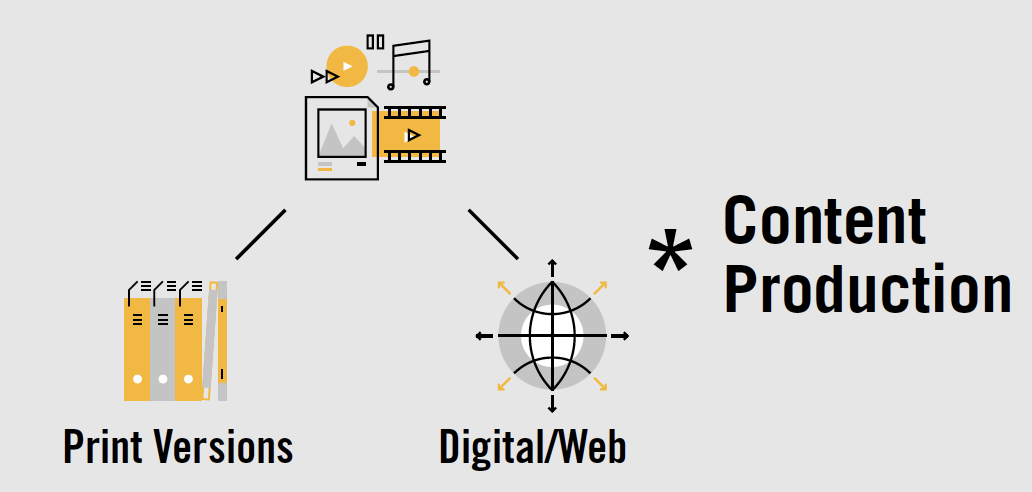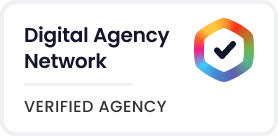Summary: Any business selling ideas or technical products can benefit from content marketing. In this post, we talk about how to create and execute a content marketing plan, as well as how to use paid and organic tools to attract eyes to that content.
Businesses on the web face a challenging task today. With so much competition, you can’t rely on bringing in clients and differentiating yourself just through having a strong website. It’s also important to create original content and promote it in order to solidify your place online.
In this blog post, we’ll walk you through our four tried-and-tested steps for content marketing: do market research; create strategic content; promote that content; and analyze the results. You can then apply what you’ve learned to your own business’s needs.
Step 1: Strategy

When you’re planning what exactly you should create, it’s important to be strategic. Specifically, you should know your core client demographics and develop goals for your content. This will largely determine your content’s formats and topics, in addition to how you amplify your content later on.
You might have a general understanding of who your clients are (and if not, you should do some brainstorming about who you’re ideally targeting), but it’s a good idea to back that up with data. This can also potentially highlight other client demographics you hadn’t initially thought of.
There are a few good (and free) ways to do this:
First, you can monitor your social media interactions. For example, you can use Facebook Audience Insights for your business’s Facebook page, and you can use Twitter Analytics for your business’s Twitter account. These will show you who is engaging with you on social media (in addition to how effective your current social media presence is).
Next, you can use Google Analytics (which you should set up if you have not already) to see what groups of people have already visited your website.
Moreover, if you’ve created content (such as blog posts) in the past, you can take a look at which pages have previously performed well (again, you can use Google Analytics for this). This will give you a good understanding of whether your current content fits with your target client, as well as what kinds of content you could produce again.
Once you’ve uncovered your target demographics, you’ll want to do some keyword research to determine what exactly this demographic wants to see. There are a host of free keyword research tools that you can use. Your general goal here is to discover what topics your target clients are currently interested in, as well as how competitive those topics are to rank for. This research is highly important in determining the focuses of your content in the next step.
Finally, you should create a list of goals for your content production. Some questions to consider: What effect do you want your content to have on readers/viewers? What do you want your content to achieve? Do you want to rank higher in search engines? Bring in more clients? Teach people information? Your answers to these questions, and others, will help in determining the scope of your content.
Step 2: Content Production

Once you have a thorough understanding of your target demographics and have a solid list of keywords and goals, the next step is to create your content.
This content could take many forms – from blog posts, to whitepapers, to podcasts, to videos. To determine what kind of content you want to create, you’ll want to consider your clients and what they’re most likely to interact with. It’s also a good idea to take a look at your competitors’ sites at this point to see what kinds of content they’re producing, as you likely have similar target demographics.
Once you’ve decided what format your content will be in, you should turn to the keyword list you developed in the first step. Using this list as inspiration, start developing potential content ideas. At first, these ideas can be both larger themes and specific topics — though, of course, you’ll want to have narrowed-down ideas when it comes time to actually create.
For example: In our 2018 post about content strategy for law firm blogs, we looked at an imaginary personal injury firm. One of the less competitive keywords that imaginary firm added to their list was “pelvic mesh injury.” Brainstorming inspired by this keyword could lead to a variety of content topics – such as a blog post about the steps you should take if you have a pelvic mesh injury, or a video highlighting notable pelvic mesh injury cases. Again, your specific topics will depend largely on your individual goals and keywords.
The next step in this process – before you actually make your content – is creating an organizational system such as a calendar or spreadsheet. This will be where you plan when exactly you want to have your content created and released. Without this system, it’s very easy to lose track of what and when you’re posting, which makes this task more difficult in the long run.
Finally, it’s time to create! It’s a good idea to have the content made by someone skilled in your chosen medium (for example, a blog post should be written by a competent writer), as well-produced content will certainly have more overall success.
Also, as you’re making the content, be sure that it stays on target with your original focus keyword, and aim to include both internal links and external links.
Step 3: Promotion / Amplification

Now that you’ve created strategic content, it’s time to develop and employ a promotion / amplification strategy. This step is highly important. Without it, your content isn’t likely to be found on the web, which would negate the effort you put into research and production.
Your promotion can include a mix of organic and paid social media, industry specific display ads and Google Ads. The exact approach you use will depend on your target demographic (for example, you’d want to emphasize social media when targeting younger clients). We’ll give an overview of several options here.
On-Page SEO:
This strategy ensures the content’s individual webpage is optimized for search engines. There are lots of possible actions within this step, such as: including a focus keyword (based on the keyword research from Step 1); writing a relevant title tag and compelling meta description; making the url specific and simple; and ensuring all of these elements are consistent and match the content on your page.
Paid Social Ads:
As aforementioned, you’ll need to really know your target demographic in order to effectively use this method. There is a wide range of ads you can purchase on different social media platforms, from carousel image ads on Facebook to text ads on LinkedIn. You’ll want to purchase those that your target clients are most likely to see and that fit best with the content you are producing.
Industry Specific Display Ads:
For this approach, you’ll focus on creating display ads (typically a larger image ad) that match your specific industry or practice areas. These ads can then be displayed in a variety of ways, such as on webpages associated with your industry or to people who have previously been on your website. These ads ensure your content is seen by people who are interested in the information it provides.
Google Ads:
Google Ads are an effective promotion strategy that can target users on both search engines and related websites. When setting up these ads, you can pair them with keywords (from your keyword research in Step 1) to ensure the people who are searching for these keywords – or are on websites related to them – see your content. In short, Google Ads is effective because it delivers content inspired by keyword and market research directly to that market.
Organic Social:
Unlike the three previous options, this method is free! Whenever you create new content, we highly recommend that you post it to the relevant social media platforms your business engages in. This ensures that your followers are kept up to date with your business’s work and immediately see the new content you’ve made. As with paid social ads, it’s necessary to know your target demographic so you can post on the correct social media.
YouTube:
The final promotion option in our discussion is YouTube advertising. This differs from the previous options because it is video-based, whereas the other options could be just images and/or text. When paying for a YouTube ad, there are several different formats you can use (each of which charge you based on different measurements, such as number of clicks or number of views). You can also specify what demographics or keywords you’d like your ad to reach.
Step 4: Analytics

As you create and promote new content, it’s important to also look at your website and ad analytics. Your goal here is to make sure your content is reaching the right people and achieving your intended goals. In other words, you’re checking to see whether your previous strategies were effective.
For this step, you can use a variety of tools, including Google Analytics (free) and SEMrush (paid). In addition, there are analytics pages on many social media sites (including Facebook and Twitter, as aforementioned), in addition to analytics on YouTube, so you can monitor how well organic presence and paid ads are performing.
Of course, it can take time for ads to resonate and for new content to be found on the web, so don’t expect your traffic to skyrocket right away. However, within a month or so, it should be clear whether your ads are working and your content is reaching the right people.
If it looks like your strategy is working, then you can continue to create and promote content using the same tactics.
However, if analytics show your strategy is not working, you’ll have to modify it when you create content in the future. You might have to target a slightly different demographic, produce different content, or adjust your overall goals. Go through the workflow again with this in mind in order to successfully understand your clients and create content that they want to see.
Wrapping Up
You should now have a good idea of what steps to take in your business’s 2019 content marketing strategy. Once you understand your clients, develop content that matches your targeted demographics and goals, promote that content across the web, and analyze your efforts, you’ll be increasing your web presence in no time.




 SEO on the Cheap: A DIY Guide to Conducting an SEO Audit
SEO on the Cheap: A DIY Guide to Conducting an SEO Audit


